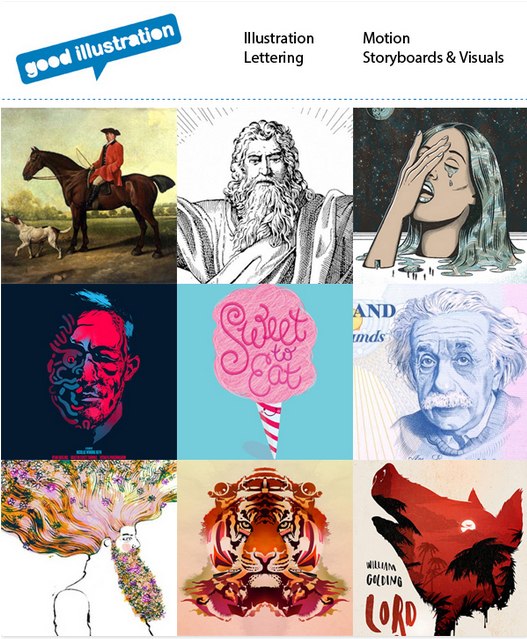Talk us through your background in advertising including how you came to co-found Fluid Inc.
I actually started my career in architecture. I was at Berkeley and had a girlfriend who hated her environmental design homework so I started doing it for her. The girlfriend didn’t last but I fell in love with designing spaces!
Turns out that architecture was an excellent training ground for designing digital experiences: dissecting complex problems, coming up with strong concepts to guide design, thinking about how people move through form and function. I pretty much do the same things today, but instead of thinking about light, circulation and space, I think about information, brand engagement and emotional connection.
We originally started the company in the early 90s around interactive 3d experiences for the building industry. We were way too early for that market so we made the shift to focus on consumer brands right at the beginning of ecommerce. We saw the light that shopping would soon be the new marketing so we planted our flag and never looked back.
You are a pioneer in interactive experience design and development. Tell us about some of the recent ground-breaking work you have masterminded for leading global brands.
Simply put, our job is to anticipate the consumer and how they want to use digital. And to figure out how to serve those consumer needs in ways that benefit our clients.
Sometimes, that does require some rocket science. We’ve received a lot of attention lately for Fluid’s partnership with IBM to create uniquely personal shopping experiences powered by Watson – the intelligence technology that beat the humans on Jeopardy. What if you could simply tell a fashion brand “I need something new and flirty” and it created a unique shopping experience just for you? And you could continue an effortless dialog until you found something you loved? Without lifting a finger or having to translate your desires through a UI. That would change everything.
Much of my recent work has been with a major consumer electronics manufacturer to figure out how consumers want to engage with brands and shop on Smart TVs. This project is especially challenging since nobody has done this right yet. My theory on why interactive tv has thoroughly sucked so far is that those past efforts savagely jolted the viewer from lean-back to lean-forward. We’re taking an approach more centric to the consumer, their mindset in the livingroom and embracing the nature of their lifelong relationship with the TV. The most interesting part is blending narrative and interactive so that consumers can essentially “watch” a store. I’m excited about it. We’ll be launching soon!
What are online retail clients looking for nowadays and how have their needs changed over the years?
Brands and retailers come from many decades of leading – and manipulating – the consumer. Now the consumer is leading and retailers are scrambling to make the shift. Add to that the proliferation of social channels and devices plus the rising importance of content in shopping.
The result is a digital climate requiring a LOT more work by the retailer to deliver on higher consumer expectations. Not everybody has accepted this reality – I think 2014 is going to be a year of reckoning for many.
What do you look for when hiring new digital creative talent?
The most challenging – and interesting – part of our business is that it’s heavy on both form and function. So the first thing we look for in a creative is that both halves of their brain work. We look for those people who have an equal love for conceiving big brilliant concepts as they do with tinkering with the minutiae of interactivity.
We hire the person/portfolio, not the training or the resume, so we have a team with diverse backgrounds from product design to applied psychology. I’d say the one commonality across the company is that everyone is hands-on. You just can’t really be digital and be otherwise. We’ll be that way even when Fluid is a thousand people.
What have been some of the greatest innovations in internet retail over the past few years?
The important context here is that ecommerce was not a staple in people’s lives until very recently. People were scared to buy stuff online, it took work to find stuff, there was a lot of friction in the experience.
The biggest innovations in the space have been the least sexy ones that are probably most obvious. Free shipping which eliminated the “penalty” of buying online. Amazon Prime which transformed regular shopping behavior. Facebook, Instagram, Pinterest as avenues for discovery and inspiration.
One promising innovation that is just beginning to transform internet retail is product customization. Customization is super interesting because it’s uniquely digital – so many ecommerce innovations are trying to emulate shopping in the real world but with customization it’s the reverse. The same way most of us can’t remember the world before Amazon or the iPhone, we soon won’t remember a time when we couldn’t customize just about anything we wanted.
Who has inspired you most during your career?
That’s a hard question as I’m sort of feral. I was 22 when we started the company so I’ve never really worked for anyone else nor had a natural opportunity for a mentor.
There are so many talented people out there doing amazing things. I get a lot of inspiration from art, great films, beautiful products and packaging and the like.
I will say though that I have those deep epiphany moments when we’re doing consumer research and testing. Watching real people just living their lives and interacting with your work in ways you would have never predicted is electric for me. So maybe I’m more driven by muse than mentor.
Which internet retailer would be on your dream client list?
The dream client is a brand that is not yet an online retailer. The opportunity of starting fresh coupled with the challenge of trumping installed players with a superior quality of experience, delivery and service would be phenomenal. This is what we did with Diapers.com/Soap.com/Wag.com/Casa.com and ultimately Amazon bought them rather than compete with them.
One last thought on “dream clients” – it’s less about the cache of their brand and what they sell and more about their culture. If they are open, collaborative and willing to try new things, then I want to work with them.
What words of wisdom would you offer young talent looking to make their mark in the industry?
In short, “doing” is the most important. Technology, brands and consumer behavior is moving forward too quickly to rely on education to prepare you for the challenges of the marketplace. I would hire the guy who did nycgarbage.com anyday over another who had a stellar resume.
What is the most impressive shopping experience you have ever had?
I’m an easy date when it comes to shopping. I shop a lot, and almost always find a detail that impresses and makes its way into my sketchbook.
That said, allowing the consumer to deeply experience the product is the most important piece. The more visual, tactile, inspired and layered, the more impressive the experience and the more likely it will work.
What are some of your predictions for the future of online retail?
What’s interesting about making predictions in this space is how fast things move, in big lurching steps. But here goes…
First, ecommerce will become like dial tone. The transaction part will become invisible, effortless and available everywhere on everything. Brands and retailers will focus more creating great content and forging an emotional connection, and be less bound by the restrictions of platforms.
Second, you can no longer compete on price, selection or convenience. Amazon has that cornered. Brands and retailers that survive will focus on what Amazon simply can never do: delivering authentic, brand-rich, occasion-specific, content-driven and brilliantly tailored customer experiences.
Third, I think, will be the reemergence of “theater” in retail. Everyone is so focused on the data – which is very important! – but precious few are using the data well. The result feels very mechanical to the consumer; painfully obvious retargeting, recommendations that are obviously machine-made, etc. That disappoints and erodes their relationship with the brand. I think we’ll see savvy brands give data a “soul” and mix intelligence with intuitive inspiration that people can fall in love with.
Last thing I’ll say is I love most what we can’t predict which is where the consumer will take things. Wherever that is, it’s where we’ll focus next.







